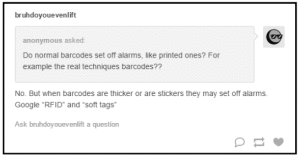 People like to believe that the hard work, dedication and sacrifice that goes into starting and building a business will be rewarded, but that’s not always the case. It’s sad to see a business fail, especially when an owner has put a lot of time, energy and money into it.
People like to believe that the hard work, dedication and sacrifice that goes into starting and building a business will be rewarded, but that’s not always the case. It’s sad to see a business fail, especially when an owner has put a lot of time, energy and money into it.
It’s particularly troubling when the reason for the failure is employee theft or occupational fraud (stealing money, property and time). Occupational fraud accounts for about 30% of small business closures per year (U.S. Department of Commerce). It’s destructive to them because they’re unable to absorb the losses created by the fraud.
The 2014 Global Fraud Study “Report to the Nations on Occupational Fraud and Abuse” estimated the average small business loses about 5% of revenue each year to fraud (The Association of Certified Fraud Examiners). When they have small margins 5% can be the difference between profit or loss — the difference between remaining open or closing the doors.
Most owners don’t think their employees are stealing from them. They believe their workers are more honest and loyal than the average. If they do suspect theft they ignore it by rationalizing “it’s not much”. They assume the statistics are because of the other guy’s workers, who must be taking a lot from him.
Unfortunately, that’s not a valid assumption. There have been many studies, done over decades, about employee dishonesty and the results are interesting — as well as disheartening. Depending on the study, 75% — 85% of people admit that they have in the past, are currently or will in the future steal time, money or property from their work place.
One of the constants, in the studies, is the conclusion that how an employee is treated doesn’t have much to do with whether they commit fraud or not. They’ll take from a boss who they like as well as from one who they don’t. Some of those 30% of business who failed were run by nice guys. No small business owner can afford to ignore occupational fraud.





 eir knowledge to others who may be new to the game. Much like a tenured LP manager taking a green agent under their wings.
eir knowledge to others who may be new to the game. Much like a tenured LP manager taking a green agent under their wings.





